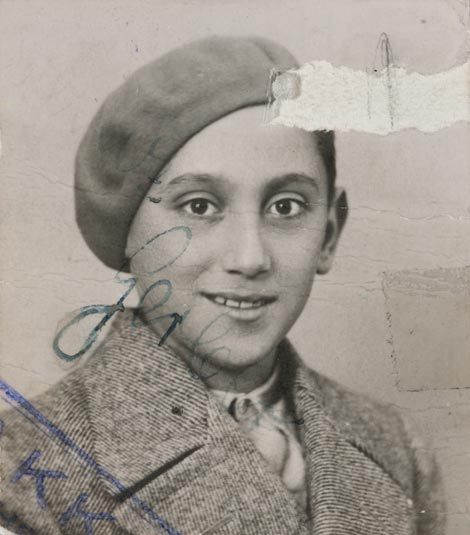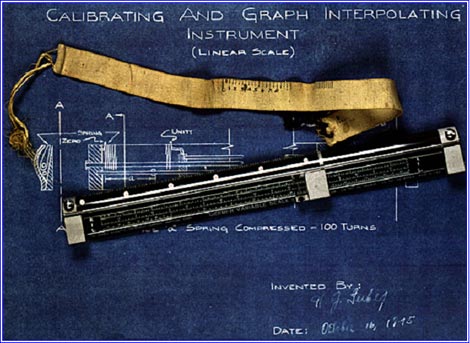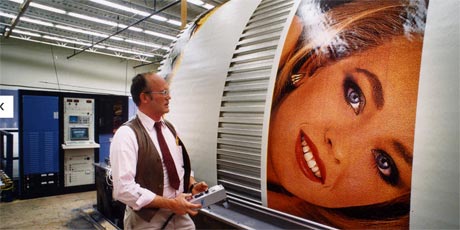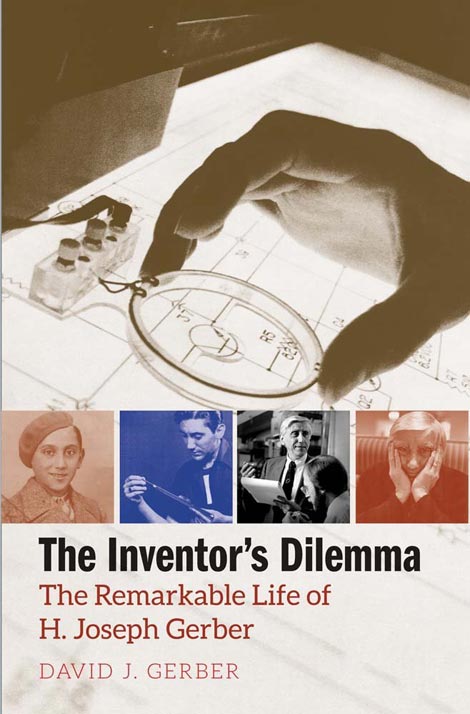
[GerberEDGE thermal printer for outdoor signs, ca. 1990. Credit: Courtesy Gerber Technology, Inc.]
LFR Editor Derek Pearson takes a close look at Joseph Gerber, the man who pioneered CAD and launched modern sign making, with biographer and son David Gerber:
It is the early 1980s and a young man in a smart double-breasted suit sporting padded shoulders and an eye watering tie is walking through the draughtsmen’s office of a UK sign making studio. He is carrying a bulky briefcase. He looks at the highly trained men working at their drawing boards and realises that every single one of them is about to be made redundant thanks to the new technology he is carrying in his case, the Gerber Signmaker IVB.
Launched around 1983 the IVB (known as the Grafix 4) was the successful derivative of the Signmaker III and had been brought back from the USA by Charlie Dobson, the founder of the noted signage materials and hardware specialist, Spandex. It was the first digital sign making system in the UK, and its story starts with an elasticated pyjama cord and a young man both behind and bored with his repetitious homework.
Or perhaps it starts in Nazi-occupied Europe when a 15-year old boy convinced his father to jump with him from the train carrying them toward Dachau concentration camp. Heinz Joseph Gerber had been born in Vienna on 17 April 1924 to Jewish parents. In 1939 he was arrested and interned in the Mauer bei Wein labour camp. A few weeks later he was released, only to be rearrested and placed with his father on a train headed toward one of the most notorious death camps established during the Nazi regime.

[H Joseph Gerber, circa. 1938. Credit: Courtesy Family of H. Joseph Gerber]
After their escape they finally made it back to Vienna where they were reunited with the boy’s mother. Gerber’s father was recaptured but thanks to his mother’s tireless efforts she and her son were finally able to board a ship for America and in 1940 they began a new life in Hartford, Connecticut. Joseph would never see his father again.
Something of his mother’s indomitable spirit burned in young Joseph’s veins. He worked in tobacco fields, bakeries and hotels, anywhere that a teenager could earn money while also learning the language and completing his education at Weaver High School.
His natural brilliance carried the day and after two years he earned a scholarship to Rensselaer Polytechnic Institute from which he graduated with a BSc in aeronautical engineering. One night, while working through repeated, tedious calculations for a homework assignment, Gerber decided to create a shortcut. He came up with a calibrated expandable scale, a computing device and an alternative to the slide rule that obviated the need for repetitious maths.
He used the elastic of his pyjamas to create the first version of what would later become the Gerber Variable Scale. His revolutionary invention allowed designers and engineers to quickly calculate graphical numerical equations. It would lead him to develop seminal products for what we now call computer aided design and laid the foundations for modern digital workflow.

[Gerber Variable Scale with pyjama elastic and patent drawings by HJG. Credit: Courtesy Family of H. Joseph Gerber and Gerber Technology, Inc.]
The Inventor’s Dilemma
His son David, celebrated author of his father’s authorised biography ‘The Inventor’s Dilemma’, says: “My dad developed a line of graphical numerical computing devices, and data reduction products such as scanners and digitisers. Then he introduced the first digitally controlled plotter for plotting graphics. This machine was used by the military to plot enemy troop placements in the battlefield, but he had bigger plans for it and that’s how digital plotting first started.
“Once my dad’s company had developed the ability to move a tool such as a pen under precise computer control he and his team could set out to automate any number of skill-intensive processes in order to enhance productivity.
They introduced the first plotters that automated drafting and the first plotter that wrote with light on photographic film, the Photoplotter, which became the world’s most accurate printing system and was the first image setter. There were also many other first-of-a-kind machines that cut, routed, engraved, machined, painted, picked and placed objects.
“The Signmaker III grew out of this technology when my dad formed a division called Gerber Scientific Products to find new applications for his innovations. The GSP marketing person noticed that there were a lot of sign shops in the phone book and a local sign maker suggested using a plotter to cut vinyl. It was a perfect fit and history has amply proved its success.”
The Gerber team grew to over 2,000 personnel and the young man who had arrived in the United States without a word of the language came to be feted by presidents and was even described as the 'Thomas Edison of Manufacturing'. His digitised systems took a leading role in such diverse manufacturing sectors as aircraft design, cartography and television screens. It even helped produce the original Universal Product Code or barcode.
Most widely used computer controlled systems in the world
His methodology of creating 'matched technology systems' around inventions predated the similar philosophy expounded by Apple’s Steve Jobs and was very successful. However, his automated production systems were initially reviled in certain sectors. David explains, “The story of how automation impacted labourers is an interesting one with many dimensions. In the apparel industry, for example, the 417,000 strong Cutters’ Union threatened to send tens of thousands of its members to protest in front of retailers who sold clothes made on automated machinery.”
David continues: “My dad believed his concept for automating the apparel factory would actually bring a host of benefits to factories and workers.”
He was right. In 1995, the head of the industry’s largest apparel labour union reported that Gerber’s advanced technology was 'one of the keys to maintaining … a global industry built around productivity and a living wage, rather than antiquated methods and intolerable wages and conditions'.
In fact, Gerber automation would go on to help create thousands of jobs worldwide across many industries, its impact touching just about every facet of modern life; not least graphics provision and sign making. In 1995 the US Department of Commerce had this to say: “The technologies first invented by Gerber for the drafting and electronics industries have now changed sign making forever from a skill-driven craft to a mass production industry. No longer are letters and designs sketched then painted or carved by hand. Under Gerber’s guidance in the early 1980s [the company] invented and developed Gerber Signmakers and related technologies, the most widely used computer controlled systems in the world for sign making and graphic arts.”
Gerber’s first grand-format digital printer went into production in 1978 and transformed billboard production and outdoor advertising. The advertising industry magnate John W Kluge said: “The product is of such quality of colour and fidelity to underlying artwork that a universal demand for our company to produce advertising displays throughout the world was created.”

[First billboard printer, ca. 1982. Credit: Courtesy Gerber Technology, Inc.]
His numerically controlled router technology was developed in the 1950s and early computerised routing machines appeared in the 1970s. The Gerber EDGE digital printer enabled graphics providers to print and cut short-run durable labels.
"The most extraordinary thing about my dad's company and his legacy is the breadth of innovation," David Gerber says. "It's just innovation, innovation, innovation." Even after suffering a stroke late in life, Gerber's incredibly inventive mind didn't slow down. His son remembers shuttling between his father's hospital room and the company’s offices with his father’s latest innovations. The hospital bed was surrounded by prototypes for brand new innovations.
David concludes: “My dad was so proud of the United States and the opportunity it gave to an émigré from a war-torn land, who was prepared to work hard and make things happen. His early life was the subject of a Broadway play in 1950. Called ‘Young Man in a Hurry’, it was written by Morton Wishengrad and starred Cornel Wilde, a big star of the time. In 1953 J Robert Oppenheimer and other judges selected my dad as one of the US Chamber of Commerce’s ‘Ten Most Outstanding Young Men in America’.
“But despite all he achieved and his many awards and accolades my dad was most proud of the one thing that meant he could hold his head high in his adopted homeland, and that was that he was first and foremost a decent man.”
Joseph Gerber died on 8th August 1996.
David Gerber’s five-star rated book ‘The Inventor’s Dilemma: The Remarkable Life of H. Joseph Gerber’ (Yale University Press) is available online, from
• Amazon at http://amzn.com/0300123507 and http://yalebooks.co.uk/display.asp?k=9780300123500.

It will be reviewed in a future issue of LFR.
Whilst you’re over at the Amazon website, you may also like to check out LFR editor Derek Pearson’s latest works at http://www.amazon.co.uk/-/e/B01BY3U9PM




